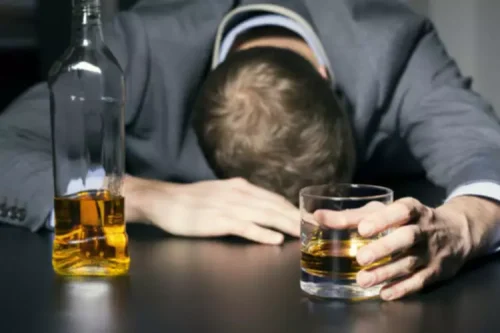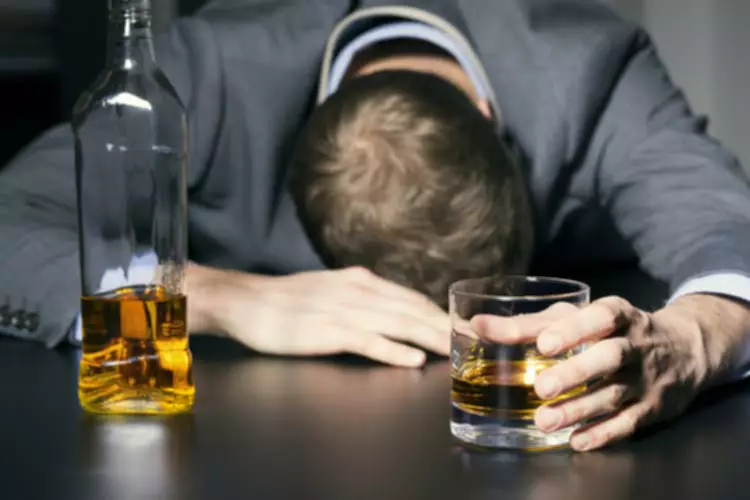Guest Editorial Advancing Reduction of Drug Use as an Endpoint in Addiction Treatment Trials

ABT-436, a potent and selective AVP type 1B receptor (V1B) antagonist, has been demonstrated to attenuate basal hypothalamic-pituitary-adrenal (HPA) axis activity in humans. To further study the pharmacokinetic or pharmacodynamic interaction in between ABT-436 and alcohol, Katz et al., (2016) conducted a single-dose clinical study in twenty moderate alcohol drinkers. Each individual received the 4 possible combinations of a single 1,000 mg ABT-436 dose (or matching placebo) and a single 0.5 g/kg alcohol dose (or placebo for alcohol) in a double-blind, randomized, 4-period crossover study. A computerized cognitive test battery (CDR System), Bond-Lader Visual Analog Scales scale, and a postural stability test were performed. The potential interaction of alcohol with ABT-436 and the pharmacological effect of ABT-436 was assessed by measuring serum cortisol. ABT-436 treatment reduced serum cortisol levels, however, no pharmacokinetic or pharmacodynamic interactions between ABT-436 and alcohol have been reported (Katz et al., 2016).
- A key finding was that the magnitude of semaglutide’s effects on several drinking outcomes appeared potentially greater than is often seen in similar studies with existing AUD medications, even though semaglutide was only administered at the lowest clinical doses.
- Bowen et al has demonstrated that OT specifically attenuates ethanol-induced motor impairment via GABAergic activity at δ-GABAA receptor (α4β1δ and α4β3δ) subunits without activating OTR.
- Placebo treated patients showed significant relapse to heavy drinking (2.4 times greater) in comparison to nalmefene treated subjects (Mason et al., 1999).
- However, some subjects became dependent on the medication itself and began to take increasingly higher doses.
- Clinical assessments also indicated that semaglutide (compared to placebo injections) reduced weekly alcohol craving, reduced average drinks on drinking days, and led to greater reductions in heavy drinking days, relative to placebo.
Browse treatment options
Varisco points out that the drug injections ended up reducing the number of drinks people had at a time versus reduce alcohol craving the number of days that people drank. “This is similar to semaglutide’s effect on food consumption in that we see people stop eating sooner, which is how people lose weight on semaglutide,” he says. Certain manifestations of counter-adaptation, presumably involving persistent dopamine dysregulation in the nucleus accumbens, can prolong vulnerability to craving long after the acute symptoms of withdrawal have subsided. This mechanism may account for the ability of cues, such as the sight, sound, or smell of alcohol, to trigger relapse years after an alcoholic has stopped drinking (Roberts and Koob 1997).
- OT (1μg, i.c.v) given ahead of ethanol (1.5/kg, i.p) attenuated ethanol-induced sedation and ataxia in the open field locomotor test.
- This α4β2 competitive binding by VAR reduces the ability of nicotine to bind and stimulate the mesolimbic dopamine system, like the mode of action of buprenorphine in the treatment of opioid addiction (Elrashidi & Ebbert, 2014).
- While many people who experience alcohol or drug addiction can, with the right support, control their impulses, for some people, their addiction is so severe that no treatments are effective.
- In the alcohol reinstatement model, pregabalin (0, 10 and 30 mg/kg) abolished alcohol seeking behavior elicited by the pharmacological stressor yohimbine, suggesting its role in the treatment of alcohol addiction.
Medications for the Treatment of Alcohol Use Disorder
In a double-blind placebo-controlled trial, patients were given two doses of oral nalmefene (20- or 80-mg/day for 12 weeks) for alcohol dependence. Placebo treated patients showed significant relapse to heavy drinking (2.4 times greater) in comparison to nalmefene treated subjects (Mason et al., 1999). Recently, ondansetron has been shown to decrease alcohol consumption in patients with AUDs. In a double-blind, randomized, placebo-controlled clinical trial, 217 patients who received ondansetron 1, 4 and 16 μg/kg twice a day for 11 weeks showed fewer drinks in comparison to placebo control (Johnson et al., 2000). They suggested that 4 μg/kg ondansetron twice a day was effective in patients with early onset alcoholism and craving (Johnson et al., 2002). In an open-label study, Kranzler et al. also reported that 4 μg/kg ondansetron twice a day was suitable for the treatment of alcohol dependence in early-onset alcoholics (Kranzler et al., 2003).

Guest Editorial: A radical advance in the integration of co-occurring mental health care within the addiction system

Each neurotransmitter binds preferentially to a single family of receptor subtypes, each of which may then stimulate, inhibit, or modulate a specific physiological function. A single neuron generally releases only one or a few types of neurotransmitters but may contain several types of receptors. A neurotransmitter released into a synapse is usually quickly removed by chemical degradation or by transporter molecules that carry the neurotransmitter back into the neuron that released it. The function of a neurotransmitter can be increased or mimicked by drugs, medications, or other chemical agents (i.e., agonists) or decreased, inhibited, or reversed by other agents (i.e., antagonists). The naltrexone injection has a recommended dose of 380 mg, given intramuscularly as a gluteal injection. The injection can be administered once drug addiction every 30 days or once a month by a healthcare provider.
In ethanol-dependent animals, prazosin (1.5 and 2.0 mg/kg) was effective in suppressing alcohol consumption, suggesting the involvement of noradrenergic receptors in the excessive alcohol drinking during acute withdrawal in ethanol-dependent rats (Walker et al., 2008). In nondependent rats, only 2.0 mg/kg dose was effective and at 0.25 mg/kg doze prazosin mediates anxiolytic effect on ethanol self-administration in nondependent rats. In general, stress-induced anxiety is a major risk factor for reinstatement to alcohol drinking. Medications such as SSRI and SNRI inhibitors, buspirone, benzodiazepines, diphenhydramine, propranolol, tamoxifen, prazosin, doxazosin, that help to block the stress-induced anxiety may also reduce alcohol consumption.


Dopamine’s role in reinforcement suggests the possibility of using dopamine antagonists to reduce alcohol consumption and craving. One study of over 350 people found that when topiramate was taken for 14 weeks, it reduced heavy drinking days more than the placebo. Interestingly, another study found that while disulfiram was more likely to lead to continued abstinence, topiramate was better at reducing cravings. Quetiapine was compared with other medications after giving ethanol (7.2% v/v for 21 days).
- Such medications increase the overall activity of serotonin in synapses as well as agonists and antagonists at various serotonin-receptor subtypes.
- In the study, naltrexone was administered to patients participating in an alcoholism rehabilitation program that included group therapy, individual counseling, health education, and recreation.
- We are moving beyond the outdated one-size-fits-all approach and embracing treatments that meet patients where they are.
- To further evaluate the enantioselectivity of baclofen on the reinforcing effects of alcohol in rats, Lorrai and his group used selectively bred Sardinian alcohol-preferring (sP) rats.
Svi komentari (0)
Nema komentara za prikaz

Dodaj komentar